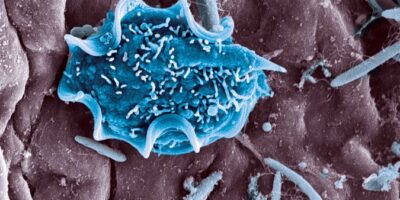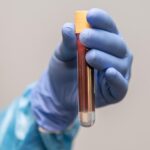With the growth of biotechnology and gene editing tools globally, many novel transgenic products with the insertion or deletion of a few bases are developing rapidly. These include food products such as GMO (genetically modified organisms) corn that resists insect pests, GMO apples that resist browning, and Vitamin A enriched rice, et. Cetera. Large-scale commercialization of GMO crops has brought with it some core ethical concerns, which raise the need for testing and detecting plants for gene editing. However, there are significant challenges in using traditional nucleic acid detection technology and in safety regulation for GMOs. Current detection methods such as quantitative PCR (qPCR), Sanger Sequencing, and High-resolution melting (HRM) do not fulfill the requirements for portability, low cost, on-site detection, rapidity, and sensitivity. Therefore, there is a need for a method that can directly detect gene-edited products in the field without complex instruments.
Scientists have developed Cas12aFVD (fast visual detection), a portable biosensing platform coupled with recombinase polymerase amplification (RPA) for on-site detection of mutations in gene-edited rice in one tube. As this platform is not dependent on laboratory conditions, it is a potential and innovative tool for the on-site detection of gene-edited products.
Scientists tested the biosensing platform on rice which has three steps. Extraction of DNA followed by CRISPR/Cas12a-RPA biosensing procedure and, finally, visual detection. They tested two techniques- Kit and rapid- for extracting DNA from seeds and leaves of 5 mutant rice and a wild type. They chose the rapid method for their platform, which used a syringe-tube apparatus, which was faster and took only 5 minutes. However, it provided a lower concentration and purity of DNA but was adequate to proceed to the next step.
The second step involved amplifying the DNA, finding the mutation in the genome, and tagging a fluorescence probe to it, which can then give a visual clue of the presence of the particular transformation. All these steps were carried out in a single tube to avoid contamination and took about 40 minutes. RPA reagent was prepared and added with the DNA to the bottom of the tube to amplify the DNA, whereas, Cas12a reagent was placed on the lid. After the amplification of the DNA by the RPA reagent, the tube was inverted to mix Cas12a. CRISPR tech uses this restriction endonuclease Cas12a (CRISPR-associated protein 12a) protein, which is guided by a crRNA to the target sequence. Cas12a and crRNA form a ternary complex and cut the DNA adjacent to a TTTA sequence called the PAM site (protospacer adjacent motif). A fluorescent probe is then added to this cut DNA.
Portable instruments for heating and detecting fluorescence were employed to make the detection process more convenient. Significant fluorescence was observed with RPA reagent volumes of 5, 10, 15, and 20 μl. Finally, 20 μl of RPA reagent was chosen to ensure the efficiency of the RPA reaction. The results were not seen at all times. However, after 12 hours, positive and negative samples could still be identified. The scientists could determine the presence (bright green) or absence (light green) of the mutants by simply viewing the color of the reaction solution with the naked eye after determining the above parameters. Finally, the fluorescence could be observed under a blue light or fluorescent protein excitation light source. After determining the conditions, the lower limit of detection (LOD) experiments were performed, and a LOD for Cas12aFVD was found to be 12 copies/μl and 0.01% for the five mutants.
To summarize, scientists have successfully created “Cas12aFVD,” a quick, visible, and portable platform for identifying mutants in gene-edited rice, particularly single-base mutants, that can be employed for on-site detection in a single tube. Cas12aFVD was used with the RPA technique, allowing fluorescent signals to be observed in 40 minutes with a LOD of 12 copies/l and 0.01%. Cas12aFVD has specificity and sensitivity, prevents contamination, and does not require complex sample handling, bulky instruments, time-consuming experimental steps, or professional analysis techniques, making it a promising and pioneering platform for detecting mutants in various GMOs in the future simply by changing the crRNA. Furthermore, Cas12aFVD can be used in conjunction with other techniques, such as colorimetry, electrochemistry, and immunology, providing technical support for laboratory and on-site detection. With more research, this CRISPR/Cas-based platform will have a wide range of applications.
Source: Wang M, Liu X, Yang J, Wang Z, Wang H, Wang X. CRISPR/Cas12a-based biosensing platform for the on-site detection of single-base mutants in gene-edited rice. Front Plant Sci. 2022 Sep 7;13:944295. DOI: 10.3389/fpls.2022.944295. PMID: 36161021; PMCID: PMC9490305.









Leave a Reply
You must be logged in to post a comment.